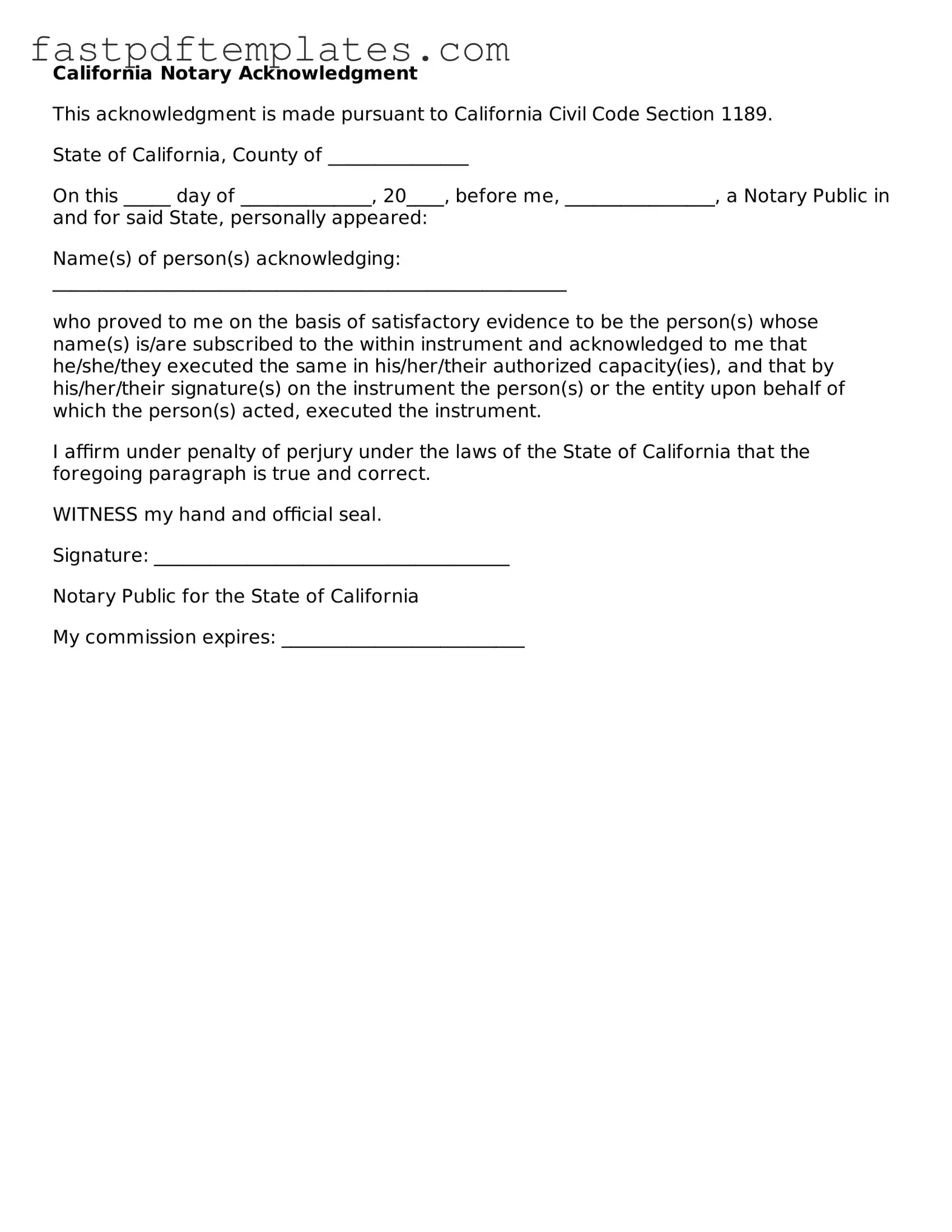Attorney-Approved California Notary Acknowledgement Document
The California Notary Acknowledgement form is a legal document used to verify the identity of individuals signing a document, ensuring that they are doing so willingly and with an understanding of its contents. This form plays a crucial role in various legal transactions, providing assurance to parties involved that the signatures are authentic. Understanding its purpose and proper usage is essential for anyone navigating legal agreements in California.
Access Document
